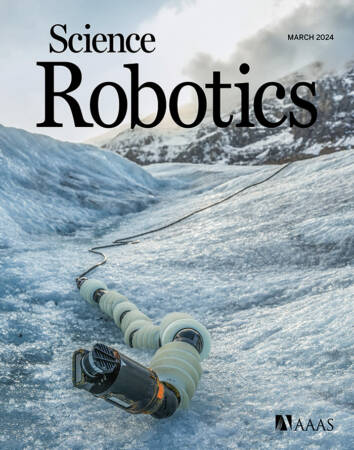
Carnegie Mellon University researchers teamed up with scientists at NASA to develop a robot capable of searching underwater oceans on distant planets for signs of life.
NASA’s Exobiology Extant Life Surveyor (EELS) is a self-propelled, autonomous, snake-like robot inspired by a desire to one day look for signs of life in the vast ocean beneath the icy crust of Saturn’s Enceladus moon. The robot can autonomously navigate extreme terrain, enabling it to traverse not only ice but also sand, rocks, cliff walls, deep craters, underground lava tubes and glaciers.
Science Robotics featured EELS on the cover of its March 2024 issue and published a paper about the project. EELS was developed at NASA’s Jet Propulsion Laboratory with collaboration from CMU, Arizona State University and the University of California, San Diego. CMU personnel who contributed to the project include Howie Choset, the Kavčić-Moura Professor of Computer Science in the School of Computer Science; Matt Travers, a senior systems scientist in the school’s Robotics Institute (RI); and Andrew Orekhov, a project scientist in the RI.
CMU researchers developed the controllers for the robot and an early prototype used modules developed by HEBI Robotics, a university spinout that Choset founded in 2014.
On Enceladus, EELS could slither down narrow geysers on the surface and swim through the vast, global ocean, estimated to be six miles deep at the south pole. EELS is equipped with risk-aware planning, situational awareness, motion planning and proprioceptive control to allow it to move autonomously far from Earth and the clutches of human control.
Closer to home, EELS could help explore glaciers, Antarctica and the moon. More information about EELS is available on JPL’s website.
For More Information
Aaron Aupperlee | 412-268-9068 | aaupperlee@cmu.edu